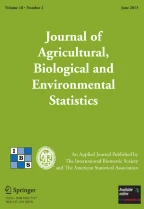Abstract
We present an applied approach to optimal experimental design and estimability analysis for mechanistic models of cardiac electrophysiology, by extending and improving on existing computational and graphical methods. These models are ‘multi-scale’ in the sense that the modeled phenomena occur over multiple spatio-temporal scales (e.g., single cell vs. whole heart). As a consequence, empirical observations of multi-scale phenomena often require multiple distinct experimental procedures. We discuss the use of conventional optimal design criteria (e.g., D-optimality) in combining experimental observations across multiple scales and multiple experimental modalities. In addition, we present an improved ‘sensitivity plot’—a graphical assessment of parameter estimability—that overcomes a well-known limitation in this context. These techniques are demonstrated using a working Hodgkin–Huxley cell model and three simulated experimental procedures: single-cell stimulation, action potential propagation, and voltage clamp. In light of these assessments, we discuss two model modifications that improve parameter estimability, and show that the choice of optimality criterion has a profound effect on the contribution of each experiment. Supplementary materials accompanying this paper appear on-line.
Similar content being viewed by others
References
Beaumont, J., Roberge, F. A., and Leon, L. J. (1993). On the interpretation of voltage-clamp data using the Hodgkin-Huxley model. Mathematical Biosciences 115, 65–101.
Berecki, G., Wilders, R., de Jonge, B., van Ginneken, A. C. G., and Verkerk, A. O. (2010). Re-evaluation of the action potential upstroke velocity as a measure of the Na\(^+\) current in cardiac myocytes at physiological conditions. PLoS One 5.
Csercsik, D., Hangos, K. M., and Szederkényi, G. (2012). Identifiability analysis and parameter estimation of a single Hodgkin-Huxley type voltage dependent ion channel under voltage step measurement conditions. Neurocomputing 77, 178–188.
Fedorov, V. V. and Leonov, S. L. (2013). Optimal Design for Nonlinear Response Models. Chapman & Hall/CRC Biostatistics Series. Taylor & Francis.
Fink, M. and Noble, D. (2009). Markov models for ion channels: versatility versus identifiability and speed. Philosophical Transactions of the Royal Society A 367, 2161–2179.
Gray, R. A., Mashburn, D. N., Sidorov, V. Y., and Wikswo, J. P. (2013). Quantification of transmembrane currents during action potential propagation in the heart. Biophysical Journal 104, 268–278.
Grewal, M. S. and Glover, K. (1976). Identifiability of linear and nonlinear dynamical systems. IEEE Transactions on Automatic Control 21, 833–836.
Hengl, S., Kreutz, C., Timmer, J., and Maiwald, T. (2007). Data-based identifiability analysis of non-linear dynamical models. Bioinformatics 23, 2612–2618.
Hodgkin, A. L. and Huxley, A. F. (1952). A quantitative description of membrane current and its application to conduction and excitation in nerve. Journal of Physiolgy 117, 500–544.
Hunter, P. J. and Borg, T. K. (2003). Integration from proteins to organs: the Physiome Project. Nature Reviews Molecular Cell Biology 4, 237–243.
Ingram, C. D., Cameron, I. T., and Hangos, K. M. (2004). Classification and analysis of integrating frameworks in multiscale modelling. Chemical Engineering Science 59, 2171–2187.
Jacquez, J. A. and Greif, P. (1985). Numerical parameter identifiability and estimability: Integrating identifiability, estimability, and optimal sampling design. Mathematical Biosciences 77, 201–227.
Joyner, R. W., Ramza, B. M., Osaka, T., and Tan, R. C. (1991). Cellular mechanisms of delayed recovery of excitability in ventricular tissue. American Journal of Physiology 260, H225–H233.
Kim, D. and Lindsay, B. G. (2014). Empirical identifiability in finite mixture models. Annals of the Institute of Statistical Mathematics.
Lee, J., Smaill, B., and Smith, N. (2006). Hodgkin-Huxley type ion channel characterization: An improved method of voltage clamp experiment parameter estimation. Journal of Theoretical Biology 242, 123–134.
McLean, K. A. P. and McAuley, K. B. (2012). Mathematical modelling of chemical processes – obtaining the best model predictions and parameter estimates using identifiability and estimability procedures. The Canadian Journal of Chemical Engineering 90, 351–366.
Raba, A. E., Cordeiro, J. M., Antzelevitch, C., and Beaumont, J. (2013). Extending the conditions of application of an inversion of the Hodgkin-Huxley gating model. Bulletin of Mathematical Biology 75, 752–773.
Raue, A., Kreutz, C., Maiwald, T., Bachmann, J., Schilling, M., Klingmüller, U., and Timmer, J. (2009). Structural and practical identifiability analysis of partially observed dynamical models by exploiting the profile likelihood. Bioinformatics 25, 1923–1929.
Rempel, M. F. and Zhou, J. (2014). On exact K-optimal designs minimizing the condition number. Communications in Statistics - Theory and Methods 43, 1114–1131.
Rothenberg, T. J. (1971). Identification of parametric models. Econometrica 39, 577–591.
Walter, E. and Pronzato, L. (1996). On the identifiability and distinguishability of nonlinear parametric models. Mathematics and Computers in Simulation 42, 125–134.
Wang, G. J. and Beaumont, J. (2004). Parameter estimation of the Hodgkin-Huxley gating model: An inversion procedure. SIAM Journal on Applied Mathematics 64, 1249–1267.
Acknowledgments
This work was supported by NIH/NHLBI award “Optimal Design of Challenge-Response Experiments in Cardiac Electrophysiology” (1R01HL118392) and National Science Foundation Cyber Physical Systems Frontier Award “Foundation, Compositional, Approximate, and Quantitative Reasoning for Medical Cyber-Physical Systems” (Award Number: 1446832).
Author information
Authors and Affiliations
Corresponding author
Electronic supplementary material
Below is the link to the electronic supplementary material.
Rights and permissions
About this article
Cite this article
Shotwell, M.S., Gray, R.A. Estimability Analysis and Optimal Design in Dynamic Multi-scale Models of Cardiac Electrophysiology. JABES 21, 261–276 (2016). https://doi.org/10.1007/s13253-016-0244-7
Received:
Accepted:
Published:
Issue Date:
DOI: https://doi.org/10.1007/s13253-016-0244-7
